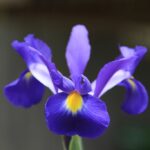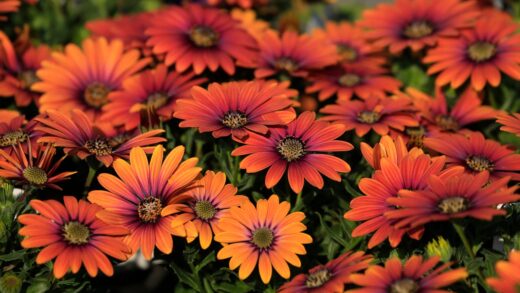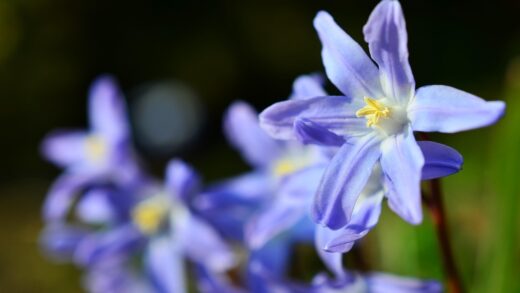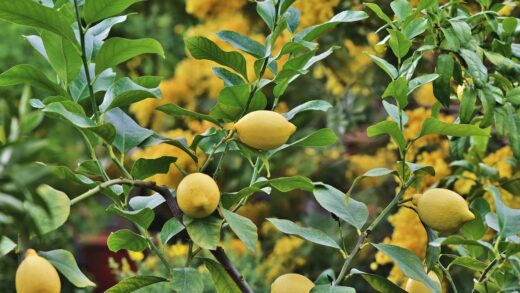While the Chinese juniper is a robust and generally low-maintenance plant, it is not entirely immune to problems and can be susceptible to a range of diseases and pests. Proactive management, based on providing optimal growing conditions and regular monitoring, is the most effective strategy for preventing these issues from taking hold. Strong, healthy plants are inherently more resistant to attack, so proper site selection, watering, and pruning form the first line of defense. When problems do arise, accurate identification is the critical first step toward effective control, as the appropriate treatment for a fungal disease will be entirely different from that for an insect pest. Understanding the most common ailments that affect this species enables a swift and targeted response, minimizing damage and preserving the plant’s health and ornamental value.
Fungal diseases are among the most common problems affecting Chinese junipers, particularly in regions with high humidity or during periods of prolonged wet weather. One of the most prevalent issues is Phomopsis tip blight, caused by the fungus Phomopsis juniperovora. This disease primarily affects the new, tender growth in the spring, causing the tips of the branches to turn yellow, then reddish-brown, and eventually die back. Small, black fruiting bodies (pycnidia) may become visible on the dead tissue, which is a key diagnostic feature. The disease is most severe when conditions are wet and mild during the spring growth flush.
Another significant fungal issue is Kabatina tip blight, which presents symptoms very similar to Phomopsis blight, making it difficult to distinguish between the two without laboratory analysis. A key difference, however, is the timing of symptom development. Kabatina infects the plant in the fall but the symptoms—browning and dieback of the branch tips—do not typically appear until late winter or early spring, before new growth has begun. Unlike Phomopsis, Kabatina blight affects year-old twigs rather than the current season’s new growth. Both diseases are best managed by pruning out and destroying infected branches during dry weather to reduce the source of fungal spores.
Cercospora twig blight is another fungal disease that can affect Chinese junipers, especially those under stress. This disease typically causes the oldest foliage on the inner, lower parts of the plant to turn brown and die, gradually progressing upward and outward. This pattern of interior dieback is a classic symptom, though it can also be caused by a lack of light reaching the inner canopy. In severe cases, Cercospora can lead to significant defoliation and thinning of the plant. Improving air circulation through proper spacing and selective pruning is a key preventive measure.
Cedar-apple rust and related rust diseases can also impact Chinese junipers, which serve as an alternate host for the fungus Gymnosporangium. On the juniper, the fungus forms hard, brown, kidney-shaped galls on the twigs and branches. During wet spring weather, these galls produce bizarre, orange, gelatinous “horns” that release spores to infect the primary hosts, which are apples, crabapples, and hawthorns. While the galls themselves do not typically cause severe harm to the juniper, they can be unsightly, and heavily infected plants may experience some dieback. The most effective control is to avoid planting junipers in close proximity to susceptible apple or crabapple trees.
Prevalent insect pests
A variety of insect pests can infest Chinese junipers, with some causing significant aesthetic and physiological damage. One of the most common and destructive is the bagworm. The larval stage of this moth constructs a camouflaged, spindle-shaped bag from silk and pieces of the host plant’s foliage. The larvae live inside this bag, feeding on the needles and enlarging the bag as they grow. A heavy infestation can lead to severe defoliation and, in some cases, the death of the plant. Control is most effective when the larvae are small and actively feeding in late spring; hand-picking the bags or applying an appropriate insecticide during this window is the best strategy.
Spider mites are another frequent pest, especially in hot, dry conditions. These tiny arachnids are difficult to see with the naked eye but their presence can be confirmed by the fine webbing they produce on the foliage and by the stippling damage they cause. They feed by piercing the plant’s cells and sucking out the contents, leading to a speckled, yellowish, or bronzed appearance of the needles. A severe infestation can cause significant dieback. Regularly spraying the plant with a strong jet of water can help dislodge spider mites, and horticultural oils or insecticidal soaps are effective control measures for heavier infestations.
Scale insects are small, immobile pests that attach themselves to the branches and needles of junipers, covering themselves with a waxy, protective coating. They feed on the plant’s sap, and a large population can weaken the plant, cause yellowing of the foliage, and lead to branch dieback. Some scale species also excrete a sticky substance called honeydew, which can lead to the growth of sooty mold. Control can be challenging due to their protective covering, but dormant oil sprays applied in late winter or early spring can be effective at smothering overwintering scales. Systemic insecticides or targeted applications of horticultural oil during the “crawler” stage in spring are also effective.
Juniper webworms are the larvae of a small moth that, as their name suggests, construct silken webs around the foliage. The caterpillars feed within these protective nests, consuming needles and causing them to turn brown and die. The webs become filled with brown, dead needles and frass (caterpillar excrement), creating unsightly masses on the branches. A small infestation can often be managed by physically pruning out and destroying the webbed nests. For more widespread problems, insecticides containing Bacillus thuringiensis (Bt) or other approved chemicals are most effective when applied in late summer or early fall when the young larvae are actively feeding.
Environmental stress and abiotic disorders
Not all problems affecting Chinese junipers are caused by living organisms; many issues are the result of environmental stress or improper cultural practices, collectively known as abiotic disorders. Winter burn is one of the most common examples. This occurs during the winter when the evergreen foliage loses water to dry winds and sun on days when the ground is frozen. The roots are unable to absorb water from the frozen soil to replenish what is lost, resulting in desiccation and the browning or “burning” of the needles, particularly on the side of the plant exposed to prevailing winds and sun.
Poor drainage and overwatering are leading causes of juniper decline. Chinese junipers are highly intolerant of waterlogged soil, which deprives the roots of oxygen and creates an ideal environment for root rot pathogens. The symptoms of root rot often mimic those of drought, including yellowing, wilting, and dieback, because the damaged root system can no longer function properly. It is crucial to plant junipers in well-drained soil and to water them appropriately for their age and environment. If poor drainage is suspected, improving the soil structure or even replanting in a more suitable location may be the only long-term solution.
Improper planting depth is another frequent but preventable abiotic issue. Planting a juniper too deep, with soil or mulch piled up against the base of the trunk, can lead to a condition known as collar rot. This suffocates the bark tissue at the soil line, cutting off the flow of water and nutrients between the roots and the rest of the plant. A plant suffering from this issue will exhibit a gradual decline, often over several years, before eventually dying. Ensuring the root flare is at or slightly above the soil level at the time of planting is essential for long-term health.
Salt damage can be a significant problem for Chinese junipers planted near roads, driveways, or sidewalks that are treated with de-icing salts during the winter. Both salt spray landing on the foliage and salt runoff accumulating in the soil can cause severe damage. Salt spray dehydrates the needles, leading to browning and dieback similar to winter burn. High salt concentrations in the soil can damage the roots and interfere with water uptake, causing symptoms of drought stress even when the soil is moist. Where possible, planting junipers away from high-salt areas or using salt-tolerant cultivars is the best prevention.
Integrated pest management strategies
An Integrated Pest Management (IPM) approach is the most effective and environmentally responsible way to manage diseases and pests on Chinese junipers. IPM is a holistic strategy that prioritizes prevention and uses a combination of tactics, resorting to chemical pesticides only when absolutely necessary. The foundation of IPM is maintaining plant health, as vigorous plants are better able to withstand and recover from pest and disease pressures. This begins with selecting the right plant for the right place, ensuring proper soil, light, and spacing conditions are met from the start.
Regular monitoring and scouting are core components of an IPM program. This involves routinely inspecting plants to detect problems early, before they become widespread and difficult to control. Early detection allows for the use of simpler, less intensive control measures. For example, hand-picking a few bagworms from a juniper is an easy and effective solution, but if the infestation is allowed to grow unchecked, more drastic measures may be required. Accurate identification of the pest or disease is also critical, as this determines the most appropriate and effective management strategy.
IPM emphasizes the use of cultural and mechanical controls as the first line of defense. Cultural controls include practices like proper pruning to improve air circulation, which makes the environment less favorable for fungal diseases. Raking up and destroying fallen debris and infected plant parts (sanitation) can remove sources of fungal spores or overwintering pests. Mechanical controls involve the direct removal of pests, such as hand-picking bagworms, spraying mites off with a jet of water, or setting traps.
When cultural and mechanical controls are insufficient, IPM may incorporate biological or chemical controls. Biological control involves using natural enemies, such as predatory insects or microbial pathogens, to suppress pest populations. If chemical intervention is required, an IPM approach favors the use of the least-toxic products first, such as horticultural oils, insecticidal soaps, or botanical insecticides. Broader-spectrum synthetic pesticides are used only as a last resort, applied in a targeted manner to minimize their impact on non-target organisms and the environment.
Disease and pest prevention
The most effective strategy for dealing with diseases and pests is to prevent them from becoming a problem in the first place. This preventative approach starts with the selection of resistant cultivars. The nursery industry has made significant strides in developing Chinese juniper varieties that show improved resistance to common problems like Phomopsis tip blight and cedar-apple rust. When choosing a juniper, researching and selecting a cultivar known for its good disease resistance in a specific geographic region can save a great deal of future trouble.
Providing optimal growing conditions is paramount to prevention. A juniper that is stressed by poor conditions—such as too much shade, waterlogged soil, or drought—is significantly more vulnerable to attack by both pathogens and insects. Ensuring the plant is sited in full sun with excellent soil drainage gives it the foundational strength to resist potential problems. Proper spacing between plants to promote good air circulation is also a key preventive measure, as it allows foliage to dry quickly, making it more difficult for fungal spores to germinate and infect the plant.
Proper watering and fertilization practices play a crucial role in preventing diseases and pests. Overwatering is a primary contributor to root rot diseases, so it is essential to allow the soil to dry appropriately between waterings. When irrigating, using soaker hoses or drip systems that apply water directly to the soil helps to keep the foliage dry, reducing the incidence of foliar fungal diseases. Similarly, avoiding over-fertilization, especially with nitrogen, prevents the development of lush, weak growth that is particularly attractive to many sucking insects and susceptible to blight diseases.
Sanitation and pruning are vital preventative maintenance tasks. Regularly removing and destroying any dead, damaged, or diseased branches eliminates potential sources of inoculum for diseases and removes overwintering sites for some pests. This should be done during dry weather to minimize the risk of spreading fungal spores to fresh pruning wounds. Also, keeping the area around the base of the juniper free of weeds and fallen debris reduces habitat for pests and improves air circulation at the base of the plant.




















